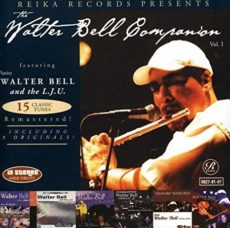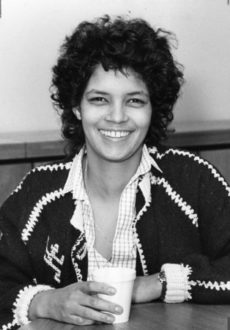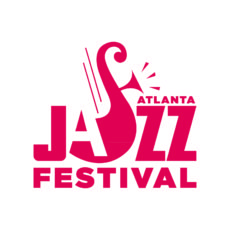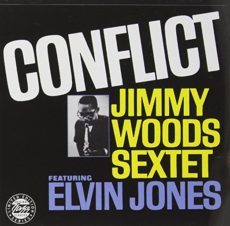
Daily Dose Of Jazz…
Walter Bell was born in Philadelphia, Pennsylvania on October 31, 1959 and is a self taught flutist and jazz historian. He moved to Richmond, Virginia to hone his craft and it was after this period of years that he rose to national prominence before moving back home. He is not one to double on saxophone, but stays true to his instrument having mastered the entire family of flutes from bass to piccolo. Carrying on the tradition of Herbie Mann, Hubert Laws, Yusef Lateef and Rhasaan Roland Kirk he focuses on jazz and Latin for his repertoire.
The founder and co owner of his own small label, Reika Records, Bell has released nine projects thus far. He performs nationally, has over 30 players that he rotates through his group, the Latin Jazz Unit. An in demand performer, he continually festivals, college & club dates and private receptions.
Flautist Walter Bell continues to perform and record, is the host a bi-monthly radio show on Washington D.C.’s WPFW Pacifica 89.3, performs a Sunday jazz brunch Hibachi in Philadelphia and still has time to produce and score TV themes for New Millenium studios with actor Tim Reid in Virginia.
![]()
More Posts: flute

Atlanta Jazz Festival… 1979

More Posts: festival

Daily Dose Of Jazz…
Chas Burchell was born Charles Burchell on October 30, 1925 in London, England. Originally a George Formby fan, he began learning the ukelele and then guitar, before hearing an Artie Shaw record that inspired him to take up the clarinet and play jazz.
Switching to alto saxophone, he started his own quintet in 1943. He tried the tenor saxophone before being drafted into the Royal Air Force, and then was transferred to the army in 1944. During the next three years he played in Greece with the British Divisional Band and following his discharge in 1947, worked in London with the Toni Antone Big Band.
By 1949 he gave up full-time musicianship and worked in a factory so that he would not have to perform music he did not like in order to make a living. A disciple of Lennie Tristano and a devoted admirer of Warne Marsh, Burchell continued to play part-time, leading his own quintet for more than 20 years, guesting with distinguished visitors such as Clark Terry, Emily Remler and Nathan Davis.
He recorded for Peter Ind’s Wave label and played with Ind in the group that backed Lennie Tristano’s only UK concert at Harrogate in 1968. Tenor saxophonist Chas Burchell, a supple, lyrical musician whose unpredictable twists and turns of phrase recall the style of his idol Marsh, died of a heart attack on June 3, 1986.
![]()
#preserving genius
More Posts: saxophone

Daily Dose Of Jazz…
Jimmy Woods was born on October 29, 1934 in St. Louis, Missouri. Woods began playing saxophone with Homer Carter’s R&B band in 1951, then served in the Air Force from 1952 to 1956. After being discharged honorably he played with Roy Milton and was with Horace Tapscott and Joe Gordon in the start of the Sixties. Following this he played and recorded two albums with Gerald Wilson and two with Chico Hamilton to the middle of the decade.
in the early 1960s Woods recorded two albums, Awakening and Conflict, both released on Contemporary Records. The second of these albums, Conflict, featured Elvin Jones, Harold Land, Carmell Jones, Andrew Hill, and George Tucker. During the decade he also performed and recorded with Teddy Edwards and Joe Gordon
Since the end of the Sixties not much has been heard from jazz alto saxophonist Jimmy Woods.
Sponsored By

Double Impact Fitness
![]()
More Posts: saxophone

Daily Dose Of Jazz..
Jay Clayton was born on October 28, 1941, in Youngstown, Ohio as Judith Colantone and after studying at Miami University in Oxford, Ohio she ventured to New York City and took lessons from Steve Lacy. Together with her husband, percussionist Frank Clayton, she presented Jazz at the Loft in their home around 1967. Among the featured musicians Sam Rivers, Cecil McBee, Joanne Brackeen, Dave Liebman, Larry Karush, Pete Yellin, Hal Galper, Jeanne Lee, Bob Moses, Junie Booth, John Gilmore, and Jane Getz.
Earning her own reputation as an avant-garde singer, Jay developed her personal wordless vocabulary. Her pioneering vocal explorations placed her at the forefront of the free jazz movement and loft scene in the 1970s, where she counted among the first singers to incorporate poetry and electronics into her improvisations. She performed and recorded with Muhal Richard Abrams, John Fischer’s Interface, Byron Morris’s Unity and for a long time she was a member of the Steve Reich ensemble. She was one of the first singers to record composer John Cage’s vocal music.
Clayton’s own performance dates appear under the heading the Jay Clayton Project, while she titles her work with other esteemed vocalists Different Voices. She co-leads a trio, Outskirts, with drummer Jerry Granelli and saxophonist Jane Ira Bloom. She has more than 40 recordings to her credit, Clayton has appeared alongside Bud Shank, Charlie Haden, Kirk Nurock, Stanley Cowell, Lee Konitz, Julian Priester, George Cables, Gary Bartz, Gary Peacock, Fred Hersch, Jeanne Lee, Lauren Newton, Urszula Dudziak, and Bobby McFerrin.
As an educator, in 1971 Jay began leading her own workshops, partly together with Michelle Berne and Jeanne Lee. By 1981 onwards she taught at Cornish College of the Arts in Seattle, Washington for 20 years. In addition to that tenure, she taught for several semesters at New York’s City College, at Graz in Austria, Berlin, Cologne and Munich. She developed the vocal program for the Banff Center in Canada, which she co-taught with fellow vocalist Sheila Jordan. The two are also teaching together at Vermont Jazz Workshop and at Jazz in July at the University of Massachusetts Amherst. She has taught masterclasses to the Manhattan School of Music and the Peabody Conservatory.
In 2001 her book, Sing Your Story: A Practical Guide for Learning and Teaching the Art of Jazz Singing, was published. She was the first artistic director for the first ever Women in Jazz Festival, served as a consultant for ABC Cable’s Women in Jazz, and has received grants from the National Endowment for the Arts, Meet the Composer, and Chamber Music America. Vocalist Jay Clayton continues to perform, record and tour.

More Posts: vocal


